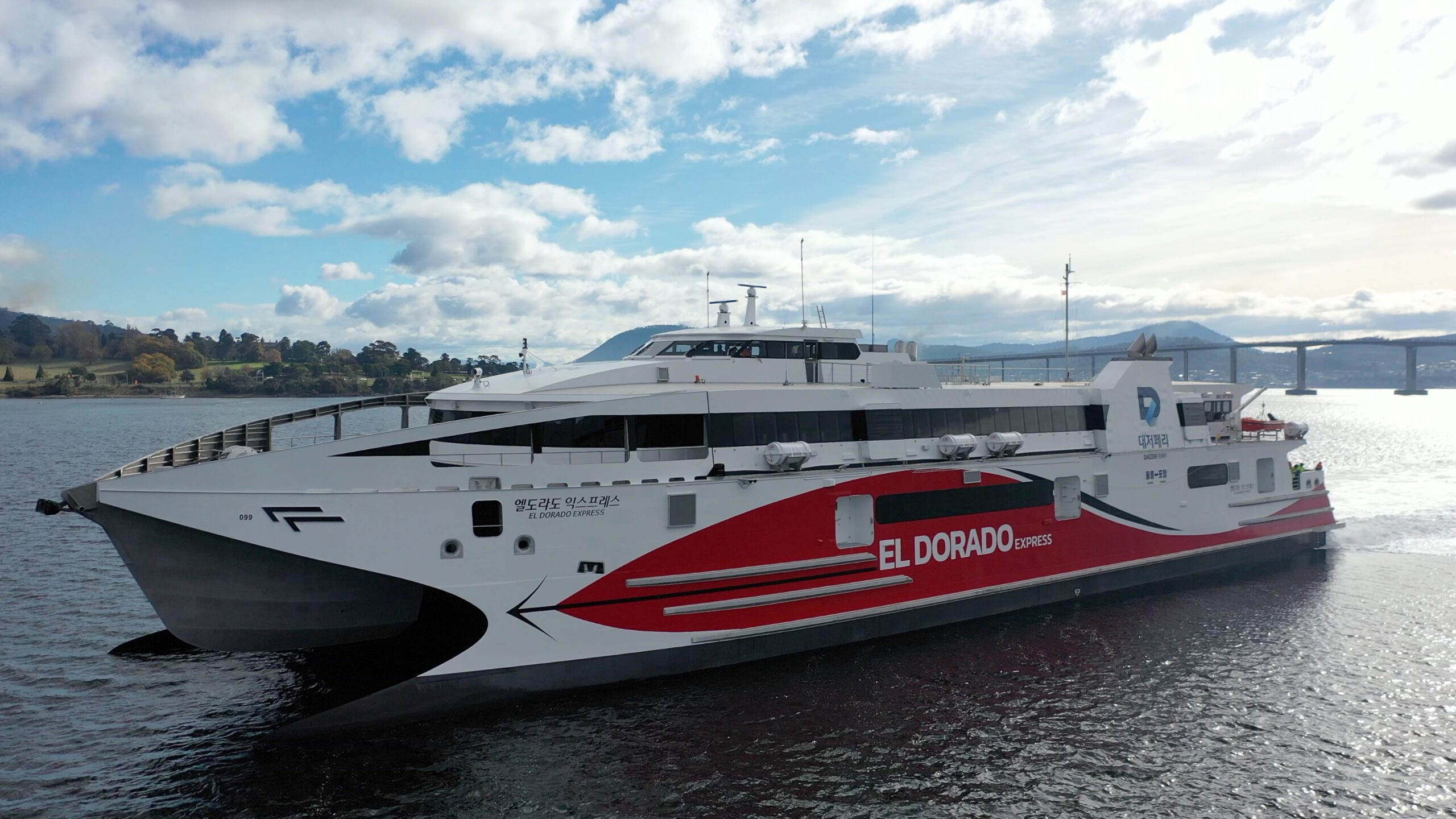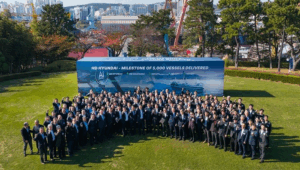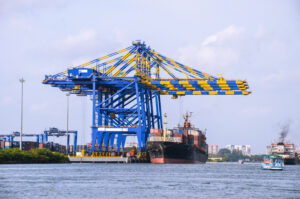Australian high speed craft specialist Incat Tasmania has handed over its latest building project, the 76 metre high speed passenger catamaran El Dorado Express which is now on her delivery voyage to new owner Daezer Ferry of South Korea, according to the company’s release.
The ship left Hobart, in the Australian island of Tasmania, in the afternoon of 22nd May on delivery voyage from Hobart to Pohang under the control of her new Korean crew, with an Incat electronics technician and mechanical engineer on board. El Dorado will re-fuel at Gladstone, Port Moresby and Davao in the Philippines.
The bespoke new ferry, Incat Hull 099, is predominately a passenger craft with ramp and cargo space forward. This ferry can carry 990 passengers and crew, and also a cargo of 25 tonnes.
She will operate for Daezer Ferry on the crossing between Pohang and Ulleung, an island located 117 nautical miles off the eastern coast of South Korea, supporting the needs of local residents and providing a service for tourists.
Incat Tasmania Chairman Robert Clifford says Incat is no stranger to Korean waters having delivered its first vessel to the region in 1995, the still highly regarded Sunflower. “The Sunflower served Ulleung island for 25 years and was only recently retired by Daezer in compliance with Korean ship age limits,” he adds.
Designed by Revolution Design the El Dorado Express is a truly fast vessel, reaching an impressive speed of 50.2 knots on sea trials with 100 tonnes deadweight.
On board El Dorado Express passengers can enjoy an abundance of natural light in a high-quality interior featuring comfortable seating, durable timber-look walkways and tasteful bulkhead panelling. The stylish accommodation is situated across two decks: Tier 1 with seating for Tourist passengers and Tier 2 for both Business and VIP classes.
Evacuation facilities for passengers and crew on board El Dorado Express comprise four Liferaft Systems Australia Marine Evacuation Stations, two port and two starboard.
As with all large Incat vessels the superstructure, Tier 2 and above, is an independent structure, connected to the hull via rubber isolation mounts, for optimum noise and vibration performance.
Forward of the Tourist cabin on Tier 1 is the 190 sqm Cargo space with wide side loading access for palletised goods. For cyclists there is ample bicycle rack storage.
Situated atop the passenger deck, El Dorado Express’s wheelhouse features the latest navigation, monitoring, and control equipment. The vessel offers views from raised helm seating, with all instruments fitted in dark grey and black consoles to aid night vision and minimise distraction.
For docking, wing station controls are provided. A separate ship’s office and lounge is located aft of the bridge where crew can lay-out charts, plan voyages or relax from day-to-day activities.
High levels of operability are key and nowhere is this more evident than in El Dorado Express’s spacious machinery rooms. The craft is equipped with four Caterpillar C280-16 engines which each deliver 6,000kW at 100% MCR. Each engine drives a steerable Kongsberg Kamewa S90-4 waterjet via a Reintjes VLJ 4431 gearbox.
Supplying electrical power are two Caterpillar C7.1 generators rated at 200 ekW each and 380V, 60Hz.



